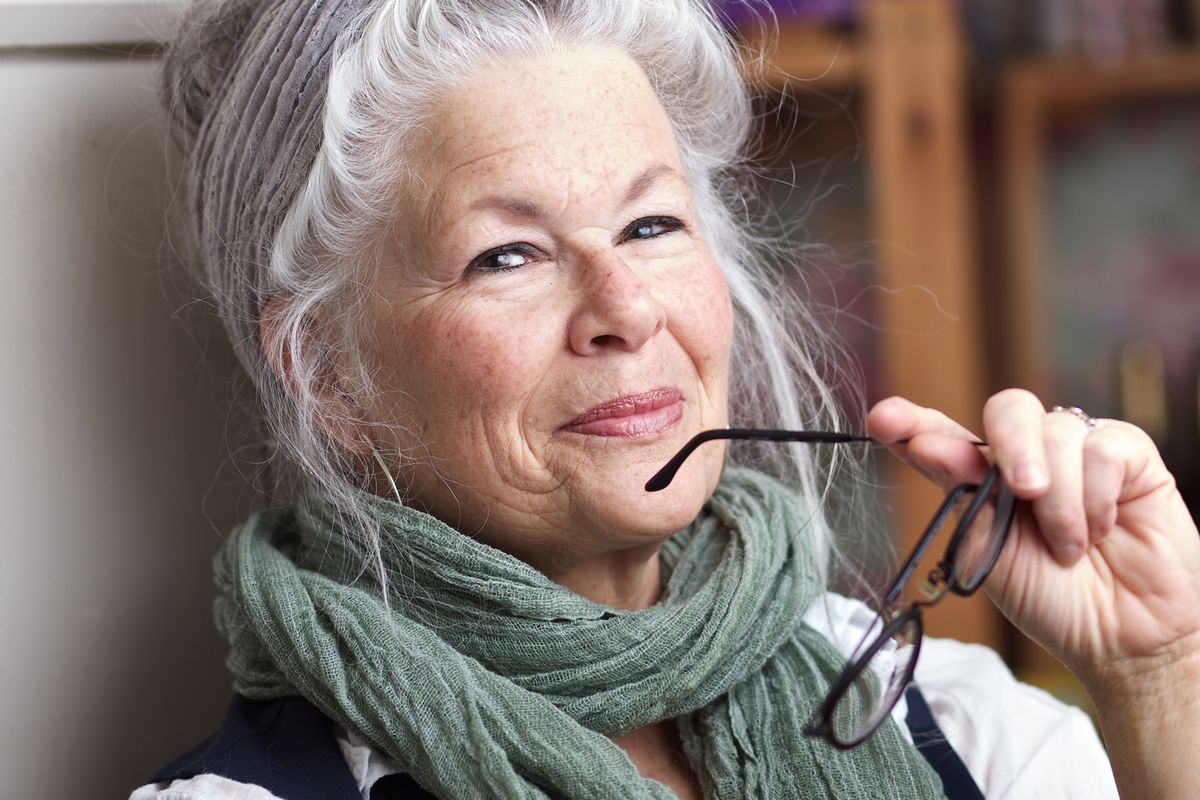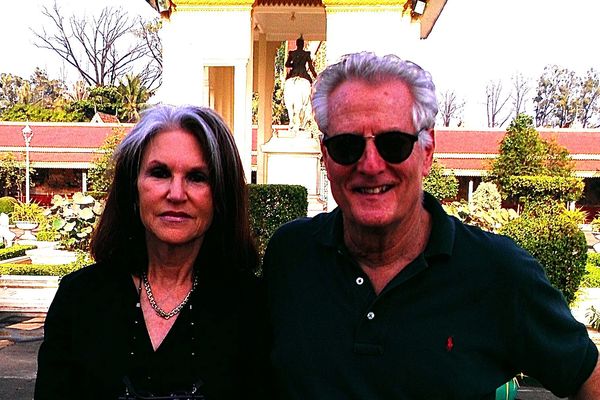This story is part of our Real Women, Real Stories series, documenting the lived experiences of women along their health journeys. Please always consult your health care professional with personal concerns or questions.
I have limitations. They look like cauliflowers.
There. I said it. Denial and avoidance have been my best friends and worst enemies.
After a life blessed with good physical health and OK mental health, I have developed a poorly understood illness called sarcoidosis. Unpredictable, variably disabling and, for the most part, untreatable. Characteristics that parallel our current pandemic.
I've wanted to write about my condition for a long time. But when I had the opportunity and lots of COVID-stay-at-home time to do it, I couldn't settle down. It's one thing to write about something in the abstract or when you know how it's going to end. But nothing is like that right now, is it?
I focus from the wide-angle universe back to my own little breath. I convince myself that how I manage the tiny speck of me and the tiny cauliflowers in my lungs will determine how my limitations unfold.
Among other things in my new world, victory might look as simple as expanding my lungs, supported by the weirdness that is Kundalini yoga. My lungs now house proliferative nonmalignant granulomas that resemble tiny cauliflower florets. They are ready to take over any organ system they choose, at any time. If they have to be anywhere, the lungs, whose alveoli already look like cauliflower, are probably the best place for them.
It is my job now to keep the granulomas opening and closing so air can perfuse my body. Kundalini, with its deep chants and relentless repetitive movements, often leaves me feeling like I've painfully surrendered to prisoner of war status. But its odd breathwork sends vibrations like a tuning fork to my lungs.
In the Plexiglas closet at the pulmonology clinic where they are testing my lung function, I pretend I'm in yoga class. I fill my lungs deeply, hold longer than I think I can, engage my core and imagine the granulomas as miniscule balloons filling with air. Even when my voice falters near the end of a chant in class, I make myself ratchet it up. I focus on an inner frequency. When the pulmonary technician tells me to hold, I hold and await her nod of approval.
In my professional life as a psychiatric nurse practitioner and addictions specialist, I have attended trainings with pioneers in mind-body medicine, including Herbert Benson, MD (The Relaxation Response), Bessel van der Kolk, MD (The Body Keeps the Score), and Amy Weintraub (founder of LifeForce Yoga and author of Yoga for Depression).
They have all provided me with research that validates what I've known for a long time. Traditional Western medicine cannot answer all our questions about our health and wellness. Long before it was common, I began to incorporate progressive relaxation techniques and guided imagery into my work with patients. In my now online office, I introduce simple "4-Square Breathing" — a quick, simultaneous method of Pranayama and distraction, to augment the psychotherapy and pharmacology we're using.
I "practice what I preach," as my sarcoidosis specialists are limited. Integrating Western medicine and holistic techniques remains up to me.

The author practicing Kundalini yoga at home, accompanied by her dog.
Pulmonology offered me a diagnosis after a year of breathless coughing that was thankfully not lung cancer. My providers had little else to say besides, "Let's get together quarterly to check on things." They told me the only treatment for sarcoidosis would be a year of corticosteroids — not a cure but an ameliorator of symptoms, with side effects that could be worse than the symptoms.
I am putting off the corticosteroids for now, for fear of those side effects. Before my diagnosis, I'd experienced months of a dizzy, dropping feeling that was hard to describe. Cardiology gave me lovely pictures of a strong and clean heart and reassurances that "nothing was my fault." Further tests confirmed that my heart does not carry the family curse of plugs and plaques but does require low doses of medications that regulate the beat (an electric fiber is missing from my septum). "Let's get together yearly and keep an eye on that," the doctors said.
Dermatology punch-biopsied a spot on my chest that still hurts. Primary care is sympathetic, admitting they don't know much about this illness (but bless her, my PA is willing to learn alongside me). Off to rheumatology where my reluctance to go on steroids is honored and my options are discussed.
Most recently, because of lab results that could indicate an uptick in granuloma activity, a nephrologist on Skype offered some shameful reminders:
"This can show up anywhere! Kidneys, heart, BRAIN," he said. He was less encouraging about my Kundalini practice than my other doctors, whose responses ranged from unbridled enthusiasm to, "Oh well, it can't hurt."
The only other person I know with sarcoidosis just died in their sleep at a young age. So.
The days I most don't want to go to yoga class, the days when fatigue or anxiety dissuade me, are usually the days I end up riding the waves of my own divinity. This is a statement I likely never would have made a year ago.
But now I lie in Savasana, the rest period after the Kundalini workout, and worry that someone will see the cleansing tears streaming down my cheeks. Other times as I lie on my mat amid the swarms of thoughts, something important — maybe the structure for an essay or an idea for a clay collage I've struggled with — will pop out at me from the chaos.
"There you go," a voice not unlike my own will whisper.
Yes, I want to feel my breath come easy. Yes, I want to walk so fast I make wind against my face. But maybe the best I can do right now is listen to my teachers. When they say "surrender," I surrender to the essence of my being — full of limitations, cauliflowers and balloons. And one day, surrender may mean the medications.
Nina Gaby is a writer, visual artist and advanced practice nurse who specializes in addiction and psychiatry. She has been working with words, clay and people for five decades. Her essays, fiction, prose poetry and articles have been widely published, most recently in the NPR "New Normal" blog, Psychiatric Times, The Rumpus, McSweeney's and Brevity. www.ninagaby.com
- Bias, Chronic Pain and Access to Care ›
- How Chronic Pain Changes the Brain ›
- Chronic Pain for Women Is Real ›
- Like Millions of Women, I Live With Chronic Pain — and I’ve Had to Learn to Advocate for Myself ›







